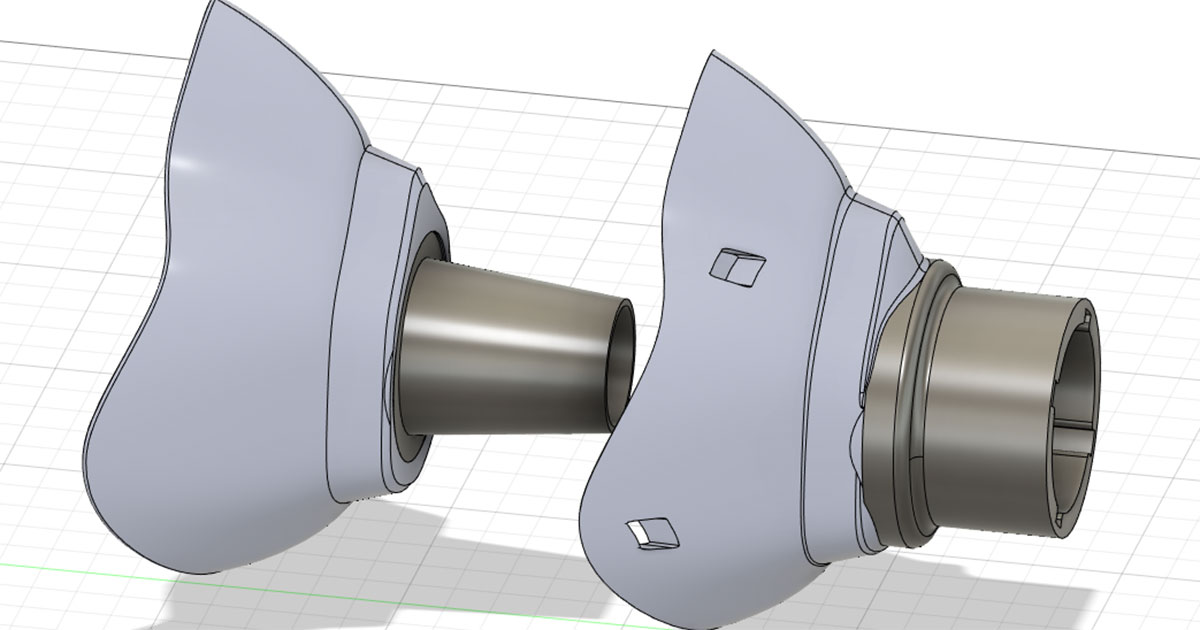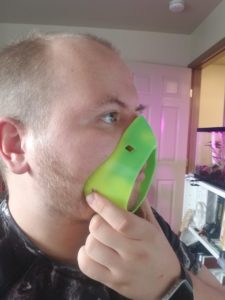
An early, partial draft of the CSU team’s medical mask design, not including the ventilation components.
In the state of Colorado’s response to COVID-19, among its first priorities is protecting frontline medical workers by providing them with enough personal protective equipment – face shields, gowns, and masks that filter out viral particles.
Colorado State University engineers are now poised to help fulfill projected demand for close to 50,000 medical masks per day for nurses, doctors and other health care providers. In support of their efforts, they’ve received a $25,000 grant from the Colorado Clinical and Translational Sciences Institute under the COVID-19-Related Research Pilot program, which just announced four statewide winners out of over 50 applicants.
The CSU team led by David Prawel, associate research professor in mechanical engineering, will spend the next three to four months using their expertise in 3D printing and prototyping to create, test and certify a medical-grade, personal protective mask that can be mass-produced.
Their end product will be a mask that meets or exceeds National Institute for Occupational Safety and Health (NIOSH) federal standards for N95 respirators, which offer a very high level of protection for workers exposed to breathable aerosolized particles. Health care workers caring for COVID-19 patients need N95-certified masks to protect them from breathing shed viral particles. The CSU team’s goal is to satisfy growing demand for such masks, first for the state of Colorado, and beyond if needed.
The team, some of whom have also been involved with 3D printing face shield components for state needs, includes Christian Puttlitz, professor and head of the Department of Mechanical Engineering, and John Volckens, professor in mechanical engineering and public health. As head of the state of Colorado’s designated testing laboratory for medical-grade N95 respirators, Volckens will offer the team expertise in and access to lab testing that ensures the end product meets the stringent federal standards.
“There’s a huge domain of collective work done so far by people in the maker community – very spirited, passionate people trying to create safe mask designs,” said Prawel, who heads CSU’s Idea-2-Product 3D printing lab. “Many people are making masks, but the key to our project is that we have the testing, 3D printing, design, and collaborations all under one roof, which gives us the control and ability to produce a good solution. We will work closely with John Volckens’ lab to design our masks to fit and function well, while making sure they will pass NIOSH certification.”
Build and improve on existing designs
The team will research existing mask designs and combine the best of what they can find or improve upon. They will choose a design that can be prototyped on a 3D printer, that passes NIOSH standards, and crucially, can be made with existing plastics manufacturing procedures.
They will also work with clinical and CSU experts for fit testing, a procedure that ensures the mask makes a tight seal on the face. Prawel will lean on his many contacts in plastics and manufacturing companies to ensure the team is moving toward an affordable, scalable product that a large company with injection molding production lines could easily mass-produce in quantities useful to the state.
The researchers are starting with the concept of a two-step design made of a rubbery, elastomeric urethane material for the body of the mask, and a harder thermoplastic removable filter that can be disinfected and reused. The team has expertise working with both of these materials. Their starting point is similar to a mask designed by a collaboration between John Deere and Oak Ridge National Laboratory.
Team expertise
The team includes Nelson Isaacson, a master’s student in the School of Advanced Materials Discovery under Prawel’s advisement, and Jason Kuiper, a graduate student in Puttlitz’s lab.

A former mechanical design engineer, Isaacson said he was thrilled to be asked to join the project, as he hopes it will reap benefits for the medical community. He will primarily focus on the body portion of the mask, making sure it fits well, matches general face contours, can hold a seal, and can interface with the filter. He has an Idea-2-Product printer at home that he will use for the project.
Kuiper is a Ph.D. student who, under normal circumstances, is working on designing a tissue engineering replacement for the human TMJ disc. For the mask project, he’s jumping in on designing the mask’s removable filter component. He has several printers from the lab in his garage now, getting ready to spit out prototypes.
“What we’re trying to do is create something you can quickly put together, and interlock,” Kuiper said.
Between the team’s 3D printing and design capabilities, and partners who offer certification and fit testing, “we have a fighting chance of coming up with a mask design for which we can raise money for high-volume injection molding solutions,” Prawel added. “We have the expertise to move quickly to take some of the best elements from some of the best designs out there and make this happen.”